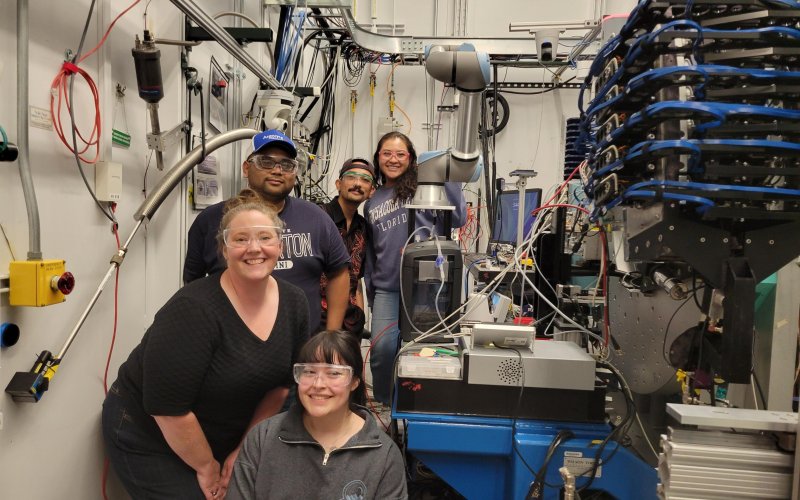
A team of Cal State Fullerton chemistry students — Linh Kim, Niko Clark, Ashley Godoy and Marissa Figueroa — and their research adviser Allyson Fry-Petit, spent a week this summer at Argonne National Laboratory studying the synthesis of a reported room temperature superconductor.
Superconductors are materials used in technologies ranging from MRI machines to high-speed bullet trains due to their lack of resistance to electron flow below a critical temperature. Unfortunately, all known superconductors require incredibly low temperatures to function, which increases their cost and limits their widespread use. In 2023, reports of room-temperature superconductivity in a material called LK-99 became a call to action for scientists worldwide to reproduce the results.
While most reexaminations of the initial LK-99 reports raise questions about the validity of the reported room temperature superconductivity, they also fail to reproduce the reaction in the initial study. This is important because understanding the reaction leading to the reported properties can help researchers understand why superconductivity was reported. This is where the Fry-Petit lab decided to focus its work at ANL.
ANL is home to the world-class Advanced Photon Source, which allowed the team to use high energy X-rays to observe material formation at temperatures ranging from room temperature to 1000 C through a method called in situ X-ray diffraction. This experiment was novel at the 11-BM instrument the team used at APS, requiring the team to pivot and reimagine experimental design in real time to obtain high-quality results.
This data includes not only where the reaction starts and ends, but also allows for the determination of what intermediates form and how that drives the final product formation. Understanding intermediate formation in reactions at high temperatures is very new, and the experiments are anything but routine. Not only did the team collect data that they will analyze for publication in the coming months, but they also determined the best way to measure powder oxides at high temperatures under vacuum at 11-BM.
This knowledge will drive their current work on LK-99-related materials as well as future experiments that will use this experimental setup. Experiments of this magnitude are time and cost-intensive, and thus the team was very grateful for the support of the National Science Foundation Eager Grant and their beamline scientist at APS, Saul Lapidus.